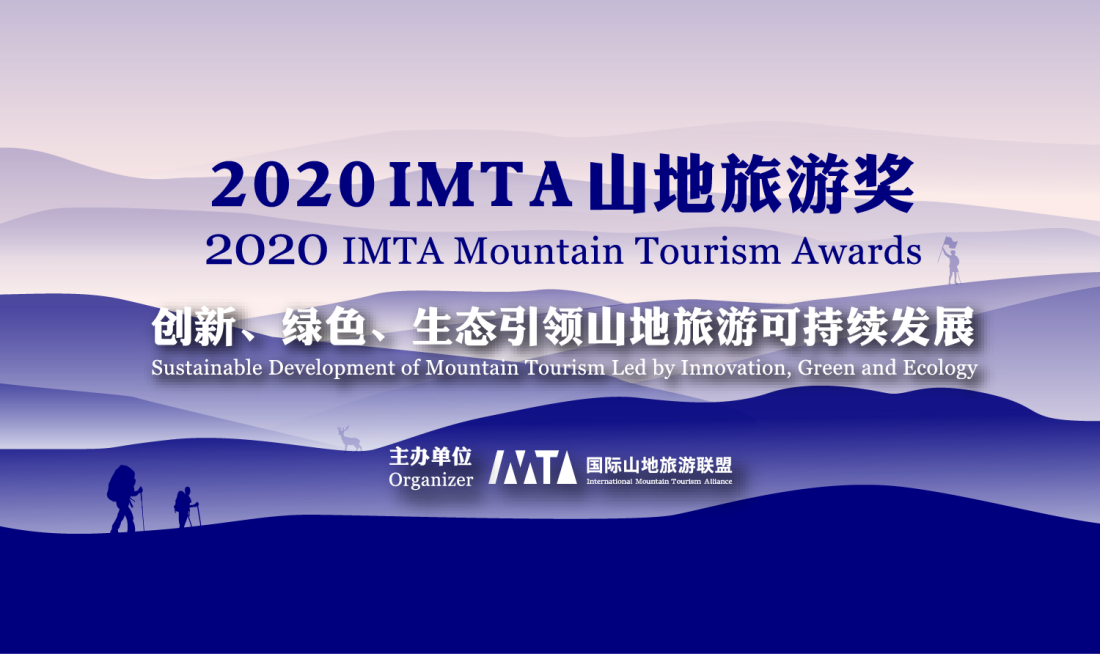On May 29, the "International Mountain Tourism Day (IMTD) 2024" Theme Events were successfully held in Nice, the capital city of the French department of Alpes-Maritimes, France. Representatives of the Chinese Embassy and Consulates in France, the French cultural and tourism authorities, representatives of local government, representatives of international organizations, members of the International Mountain Tourism Alliance (IMTA), tourism agencies, tourism enterprises, industry experts, and media gathered together to discuss and revolve around the theme of "Mutual Understanding among People through Mountain Tourism" and the forum theme "Mountain Tourism Destinations Responding to Climate Change". The rich exchange activities highlight and promote the development concept of mutual learning among civilizations, driving innovation in the "Mountain Tourism+" model.

Wu Pu, Director of the Institute of Tourism Policy and Strategy Studies, China Tourism Academy made a speech in the Theme Event headlined "Responding to climate change - developing climate adaptive tourism industry":
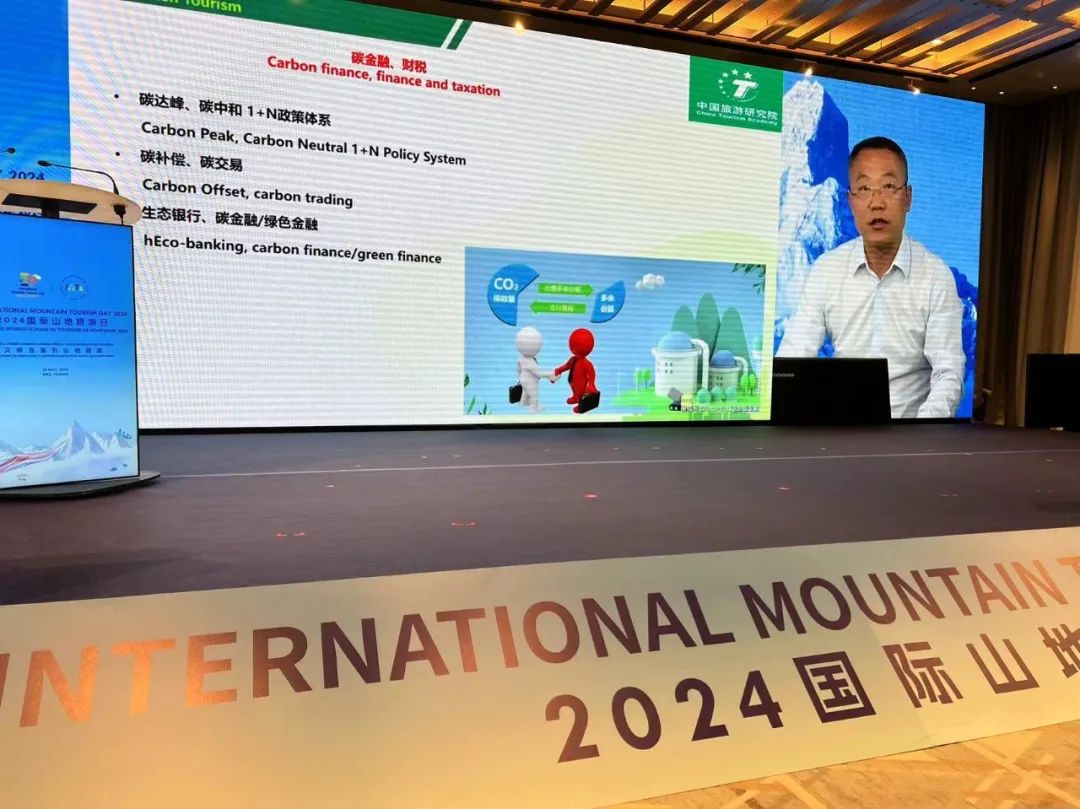
I regret that I can only meet and communicate with you all via video, but coincidentally, I am currently conducting fieldwork on mountain tourism in the hometown of the panda—Aba Prefecture, Sichuan Province, China. The photo behind me is of the Half-Spine Peak at an altitude of 5430 meters.
Thanks to the joint efforts of global scientists and UNWTO、UNWMO, the impact of climate change on the tourism industry and the feedback mechanism of the tourism industry on climate change have become very clear. The impact of climate change on mountain tourism destinations is significant. The impact of frequent natural disasters on snow and ice tourism in high mountain areas is also well known to everyone. The choice of this topic for the forum is very necessary and meaningful.

Half-Spine Peak, source: Aba Cultural Travel
Next, I will share my personal research findings, titled "Responding to climate change - developing climate adaptive tourism industry." It mainly has three aspects: the relevant progress in China, the development of climate-resilient tourism, and strategies and recommendations for the green development of the tourism industry as a green industry.
So first is the progress. The Chinese government attaches great importance to climate change and the tourism industry, and policies and guidance on green development, low-carbon development, and climate change response of the tourism industry have been issued from the national to the departmental level. The Ministry of Culture and Tourism has also introduced standards for the green and low-carbon development of the cultural and tourism industry. This includes green tourist attractions and green hotels. We have also jointly issued guidelines with other departments to oppose food waste. Fifteen years ago, I conducted the first quantitative assessment of energy consumption and carbon dioxide emissions in China's tourism industry. The results showed that in 2008, the total energy consumption of China's tourism industry was 433 terajoules (TJ), accounting for 0.52% of the total national energy consumption, which is less than 1%. This also proves that the tourism industry is indeed a green industry. In 2018, under the guidance of the UNWTO, our academy organized an international forum on global climate change and tourism. Many familiar old friends attended this forum, such as Guterres, Susan Bacan, Lipman, and Danny Scott. I checked the schedule, and Mr. Lipman is also attending today's meeting. The academic community also pays close attention to global climate change and tourism. Since 2009, the relevant research in our country has entered a phase of rapid growth. Although it started slowly, it has maintained a relatively high level of attention and publication of papers since 2009.
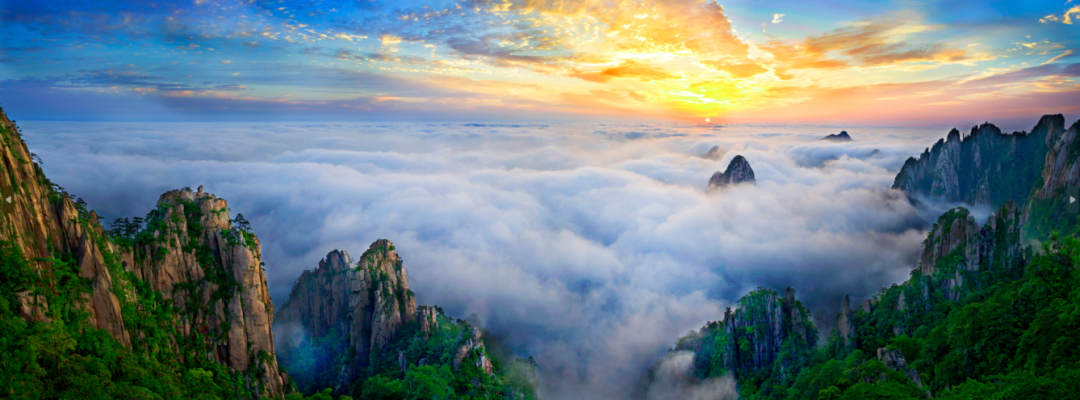
Mount Huangshan, Anhui, China, source: IMTA
The second part is the development of climate-adaptive tourism. 17 departments including the Ministry of Culture and Tourism, issued the National Climate Change Adaptation Strategy 2035 in 2022, which clearly proposes that to adapt to climate change, climate-adaptive tourism must be developed. The strategy proposes to improve the emergency response and visitor safety management systems of tourist destinations in the face of extreme weather and climate events, and to strengthen regional actions to adapt to climate change. The Northeast region should develop ecological tourism and become the largest summer retreat and a world-class ice and snow tourism destination in the country. The southwestern region where I am today needs to strengthen the protection of characteristic landscapes, natural heritage, historical culture, and ethnic customs in climate-sensitive and ecologically fragile areas, and become a world-renowned destination for ecological and ethnic cultural tourism.
Summer retreat tourism and ice and snow tourism are also two areas that I have been involved in promoting in the past. Now, let me give a brief report. With the warming of the climate and the intensification of the urban heat island effect, there are more and more "furnace" cities. China has a profound cultural gene for summer retreat, and the summer vacation period coincides with the social arrangement of school holidays, thus providing a stable and continuous market. Coupled with China's extensive inventory of climatic resources for summer retreat tourism, we estimate that China is the world's largest market for summer retreat tourism, with a total output value reaching several trillion.
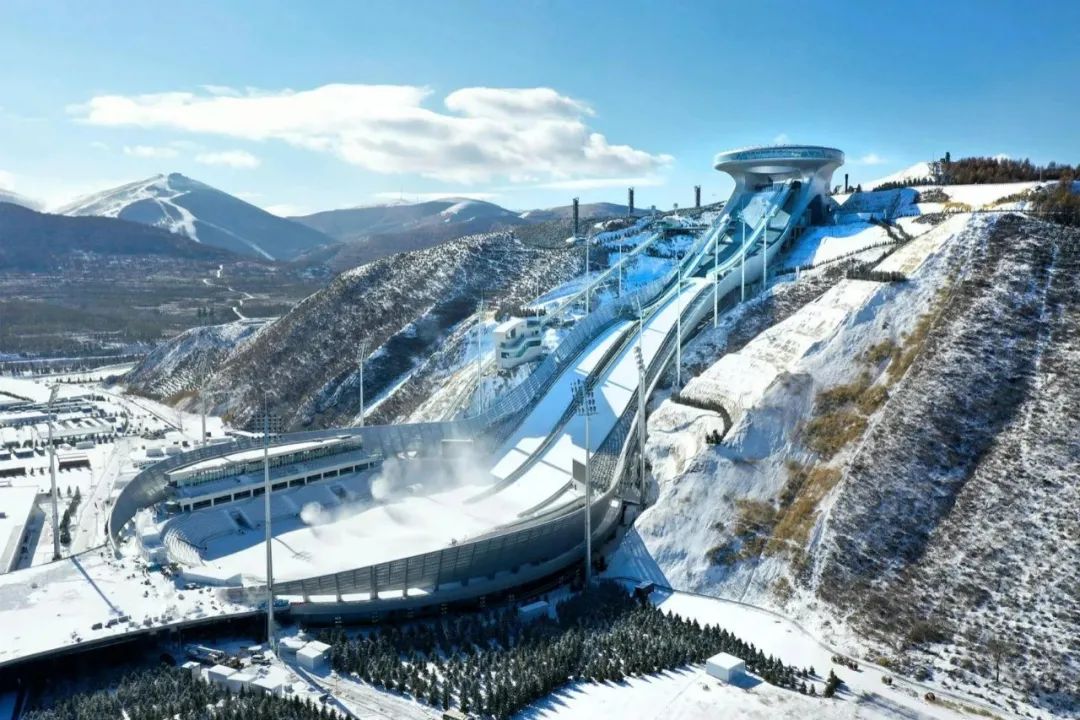
Beijing Winter Olympics, Zhangjiakou competition area, China
Source: Zhangjiakou Cultural Tourism
The role of climate in the transformation of tourism from sightseeing to leisure and vacation is also constantly changing. In the era of sightseeing, it was mainly a background factor or a cause of the landscape, but in the era of leisure and vacation, the climate has even moved from the background to the forefront, becoming a major attraction for tourism. So Fu Yingchun, the Executive Secretary-General of IMTA, comes from Guiyang, the famous summer retreat capital of China, known for its refreshing climate. Regarding ice and snow tourism, the Chinese government successfully hosted the 2022 Beijing Winter Olympics. Starting from our successful bid for the Winter Olympics in 2015, to the successful hosting in 2022, we achieved the vision of engaging 300 million people in ice and snow sports. We have made a statistic, in the last snow season, the number of people participating in ice and snow tourism nationwide reached 312 million, with tourism revenue approaching 350 billion yuan.
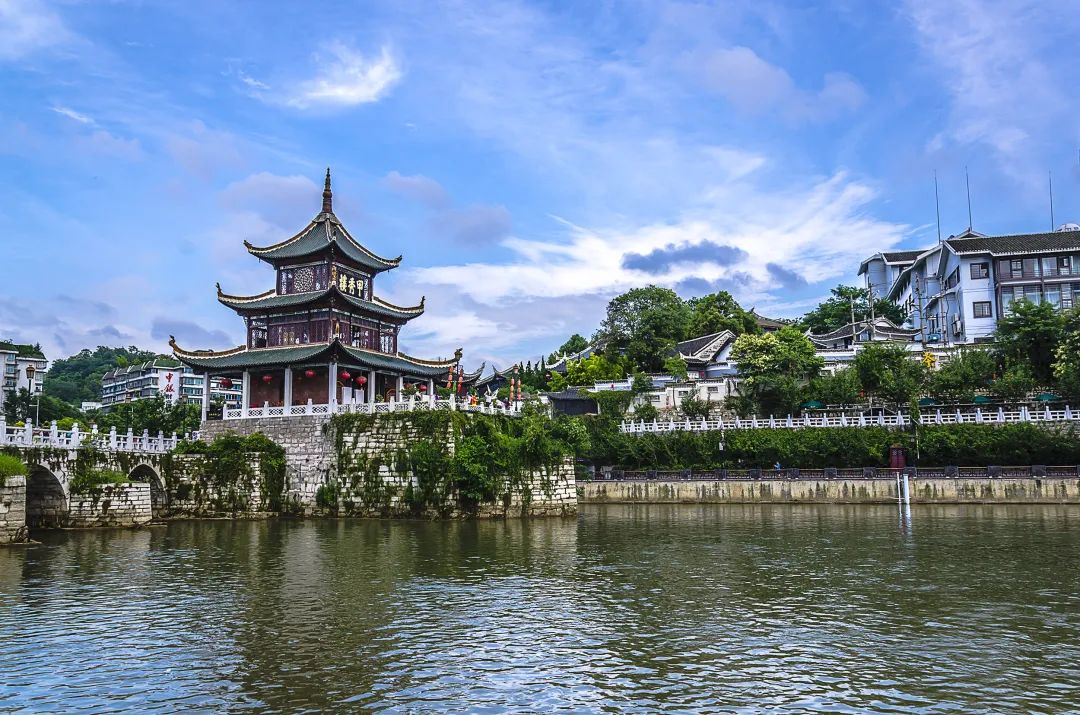
Jiaxiu Building, Guiyang, Guizhou, China
Source: Guiyang Intangible Heritage
Then the last one is the green development of tourism green industry. Undoubtedly, tourism is a green industry, it is a smoke-free industry. The Ocean Tourism Declaration clearly states that tourism is a smoke-free industry and does not necessarily bring the destructive consequences caused by industrialization. But at the same time, tourism is not a naturally green industry. Due to the high relevance of the tourism industry and with the rapid expansion of the industry scale, the tourism industry as a whole also produces a large amount of carbon emissions, and its impact on climate change and the ecological environment cannot be ignored. The latest research indicates that the overall GHG (Greenhouse Gas) emissions from the tourism industry now account for 8% of the global total.
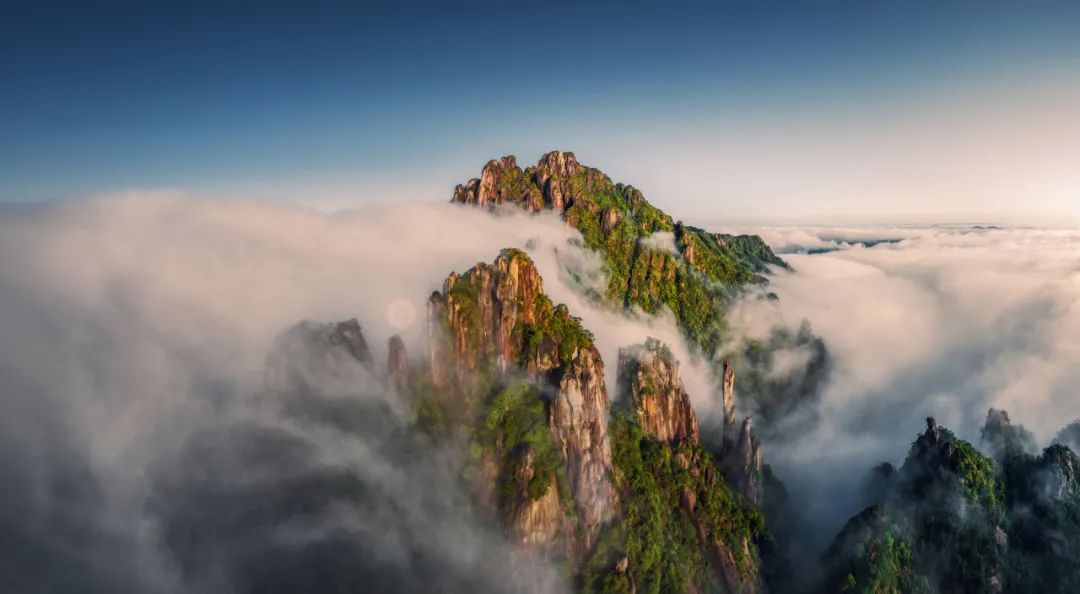
Sanqing Mountain, Jiangxi, China
Source: Sanqing Mountain tourism
Based on this, we propose measures and suggestions for the green development of the tourism industry:
First and foremost, it is essential to vigorously develop eco-tourism. China began to introduce the concept of eco-tourism since the 1990s. The former National Tourism Administration designated 1999 and 2009 as the "Year of Eco-tourism" respectively. In 2008 and 2016, two phases of the national eco-tourism development plan were issued, and national standards for eco-tourism demonstration zones were promulgated. The 14th Five-Year Plan clearly proposes to continue implementing the national eco-tourism development plan and to promote the green development of the tourism industry. In the near future, policy guidance on the green development of the tourism industry will soon be issued.
The second is to increase the application of green, low-carbon energy and technology. The core of the green development of the tourism industry is technology, especially in key areas such as tourism, transportation, and hotels. This also includes themes like today's focus on mountainous areas, the greening and low-carbon efforts in mountain facilities and equipment, including new energy transportation, energy-saving, water-saving, and gas-saving in hotels. We once conducted a study on the potential for energy conservation and emission reduction in a hotel, and the results indicated that its potential for emission reduction was slightly higher than the national average, equivalent to 0.58% of the country's total.
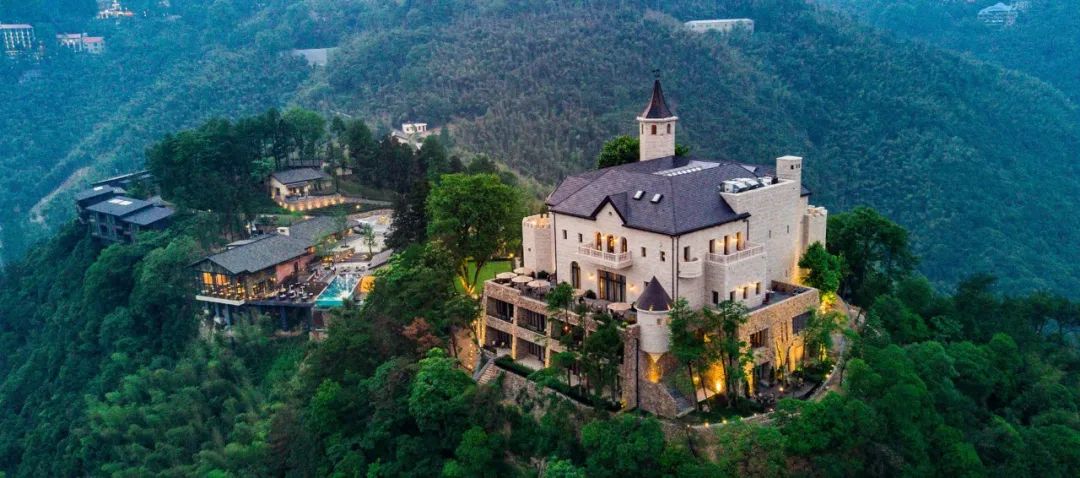
naked Stables in Moganshan, Zhejiang, China
Source: naked RETREATS
The third point is to strengthen energy management, monitoring, and statistics, to enhance contract and personnel management, and to intensify the monitoring, statistics, and accounting of energy consumption in the tourism industry.
The fourth is carbon finance and carbon fiscal and tax policies. The development of the tourism industry cannot be separated from green development, nor from a comprehensive policy of finance and fiscal and tax. After the Chinese government proposed the 3060 dual-carbon strategy, a 1+N policy framework was established, which includes carbon finance and fiscal and tax policies. The tourism industry should actively utilize these policies. In 2023, the national carbon emission trading market's carbon emission allowances have reached 212 million tons, with an annual transaction volume of 14.4 billion yuan. The People's Bank of China has also introduced monetary policy tools to support carbon emission reduction. Local banks are innovatively developing services like wetland loans and wetland carbon sink loans, that is, issuing loans to relevant entities with wetland carbon sinks as collateral, for enterprises to purchase high carbon sink wetland crops that increase carbon absorption, to protect marine wetlands. This is also the first wetland carbon sink loan in the country.
Thank you!
Text source: IMTA
Editor Ⅰ: Zhang Wenwen
Editor Ⅱ: Wu Dan
Editor Ⅲ: Liu Guosong




